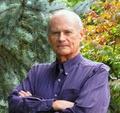In the last article, I stated that Meditation is one of the most effective consciousness expanders. In this article, I will provide a brief overview of what meditation is and how to do it.
Meditation is a response in the nervous system and there are many ways to trigger that response. Once activated, certain chemicals flow, brain waves change from beta waves to alpha waves, metabolism drops, senses become more acute, the body relaxes deeply, and the unconscious mind comes more to the fore, making us more receptive and more responsive to suggestion. Chemically and physiologically, this response is pretty much the opposite of the fight-flight response and regular meditation produces a number of laboratory-proven physiological and psychological benefits.
People sometimes talk loosely about meditation. They might refer to walking , dancing, or moving meditation . Certainly, these activities can alter one’s state of awareness, but it is highly unlikely that meditation occurs. People sometimes cite interesting themes and ideas to contemplate in a quiet time. These might inspire, affirm or otherwise help us to feel good, but they are not meditation. And, although quite beneficial, neither is mindfulness, most of the time.
Meditation can be achieved in many ways, and unfortunately, there are those who make it unnecessarily complicated. Meditating is easy and natural. The hard part is finding the time to do it on a regular basis. It is much like physical fitness in that regular meditation becomes easier and, for most people, the benefits begin to flow after about three or four weeks of regular practice.
So, how does one meditate? There are lots of ways but here are a few simple steps that I have found to be effective in my classes over the years:
Find a quiet place where you will not be disturbed for the next 20 - 30 minutes. Mute the phones and ask others to be quiet and see that you are not interrupted.
Sit in a comfortable chair, with your spine straight, feet on the floor and no arms or legs crossed. If you can handle the lotus position, go for it. If you prefer to lie down, OK but you risk falling asleep and, of course, sleep isn’t meditation.
Focus your attention on your breath and keep it there for as long as you can. To help, don’t say or whisper, but just think the word “in” with each inhalation and the word “out” with each exhalation. You might observe or feel the air as it moves in and out of your nostrils.Chances are your mind will begin to drift away from your breath and on to the chatter and worry of everyday life. Don’t worry about it. Don’t beat yourself up. Just gently come back to your breath. With practice, you will get better at this, but likely never perfect – and you don’t have to be, you just need to get it mostly right.
After about ten minutes or so, if you have maintained your focus on your breathing for most of that time, you will be meditating. It’s that simple. Carry on, either continuing to focus on your breath or place your attention on some other singular theme, idea, affirmation , visualization, problem, etc.
Now, it’s a fair bet that you’ll have some questions. Given our time limitations here, I can direct you to my website at: www.peterhdennis.com , where you can click on the Meditation tab. There you can see some further description as well as two free recordings that you can listen to and/or download. As well you can go to my January 15, 2017 podcast where I was interviewed and answered a number of questions. Finally, all of this is in my book on Spirituality, which, with its many reviews, can be seen on my website at: http://www.peterhdennis.com/Book_-_Spirituality:_Understanding_It_and_Pu... .
Peter Dennis, B. Comm., B. Ed., M.B.A. is the Past President of the Richmond Hill Chamber of Commerce, The Human Resources Professionals Association of Windsor and District, and The Ontario Chapter of The International Graphoanalysis Society.
Peter is a Certified Consulting Hypnotist, a Meditation Teacher and a personal coach. He has been a Human Resources executive with major business organizations, and as a university lecturer and college professor, he has taught HR Management, Emotional Intelligence, Metaphysics, Handwriting Analysis and Self-reliance. Peter continues to write, give talks and work with individuals.


